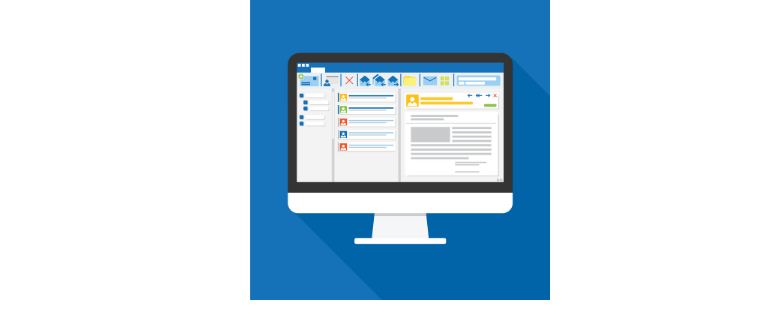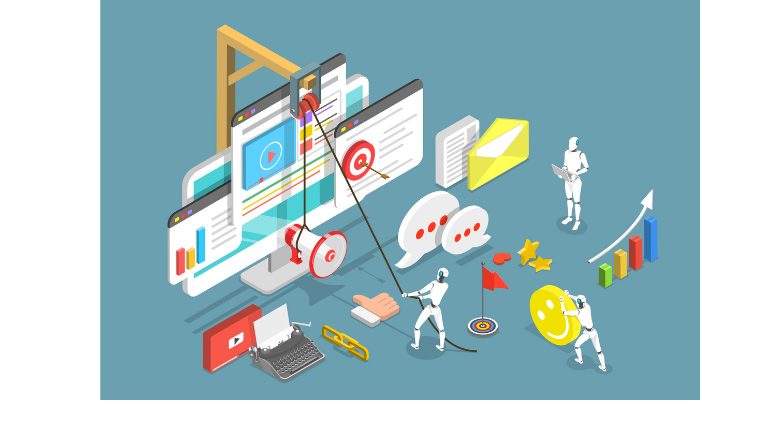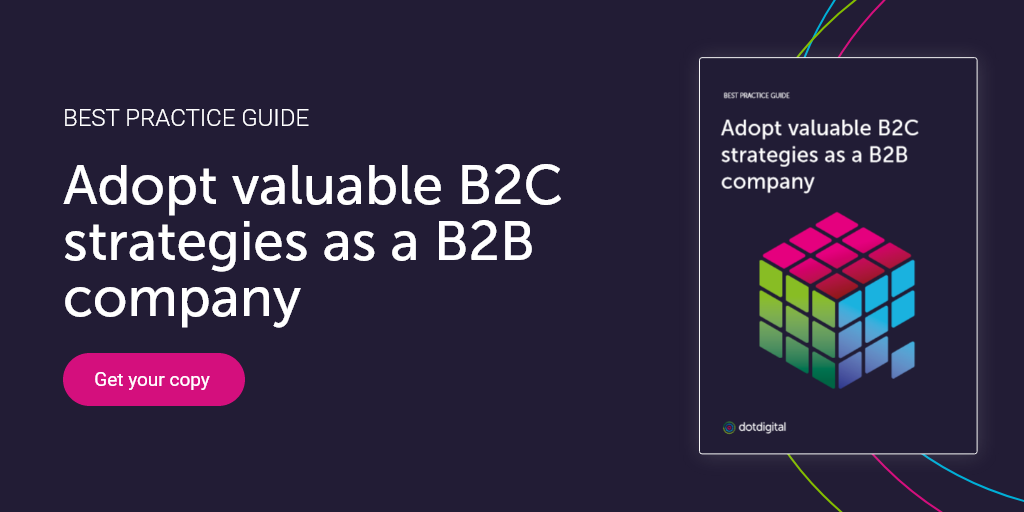What is B2B marketing?


In this article, you’ll discover what B2B marketing is, understand the difference between B2B marketing strategies, and learn how to engage and convert your business audience.
What is B2B marketing?
B2B marketing refers to the marketing of products or services to other businesses and organizations. As a result, all marketing strategies or content is geared towards engaging a business over an individual.
B2B vs B2C marketing
B2B marketing content is more straightforward and informational than traditional business-to-consumer (B2C) marketing.
The decision-making process of a consumer is significantly different from that of a business. Business purchase decisions are based on the bottom-line impact they will have on the company’s revenue. That means that B2B marketing has to demonstrate the immediate value your brand will bring to a business to keep them engaged.
B2B marketing targets organizations by addressing the needs, interests, and challenges facing those making the decision to purchase. B2C marketing, on the other hand, targets the needs, interests, and goals of individual consumers who make decisions for themselves.
The purchase process is much more complicated for a B2B brand. Customers often prefer working with people (e.g. salespeople) to help them identify the specific product or service they need. The decision-making timeline is often much longer. Customers have to confer with decision-makers and other important stakeholders in the business.
Ultimately, B2B customers are making purchases for long-term solutions. The sales cycle is long but so is their relationship with you. They sign longer contracts and will have a long relationship with your company – as long as you continue to fulfill their needs.
But, as much as B2B and B2C differ, they also overlap in many ways. B2B marketers can always learn from B2C campaigns who have more freedom to try new and emerging marketing tactics.
B2B ecommerce
Ecommerce is one of the major ways B2B and B2C marketing tactics overlap.
Like with traditional B2C ecommerce, B2B ecommerce transactions take place online, most often via a website, but occasionally through apps or other channels. These purchases are significantly influenced by product research, reviews, and customer ratings and don’t necessarily need the involvement of a salesperson or account manager.
The decision-making and buying process for these customers has changed dramatically in recent years. They rely heavily on your company’s website to research and understand your offering. Websites have turned into digital catalogs and B2B buyers want a B2C-like shopping experience.
Types of B2B marketing
B2B content marketing
B2B customers are driven by logic. They want to see that your brand has the expertise and know-how to teach them how to get the results they want. The best way to prove that you have what it takes is through the content you produce. Blogs, whitepapers, and ebooks are essential.
Regularly updated blogs boost your organic visibility and help drive inbound traffic to your website. Whitepapers, ebooks, and other standalone assets are often gated, acting as a vital lead generation tool.
Video is also a communication medium that’s only growing in importance for B2B content marketers. Videos can help you explain complicated business concepts, communicate your brands’ personality, and drive leads into the funnel in a matter of minutes.
Good content marketing will expand your business’s audience and develop and strengthen brand affinity. Ultimately this will lead to more leads and sales. Therefore, it should be a vital part of your B2B marketing strategy.
Social media marketing
Social media is no longer a channel reserved for B2C brands targeting consumers.
In recent years there has been a significant growth in B2B buyers using social media to make purchasing decisions. In the same way that consumers trust reviews posted by peers, B2B buyers are turning to social media to learn about brands they’re interested in. Seeing a B2B brand interact with its customers on social channels builds confidence.
Social media humanizes a brand. It may not always bring in a huge number of leads, but letting your personality shine will help build brand awareness.
Search engine marketing
Search engine marketing (SEM) is a combination of search engine optimization (SEO) and paid advertising.
As a B2B marketer, your SEM marketing strategy has to be more advanced than a B2C brand. For your SEM campaigns to be successful, you need to understand the customer journey and surface relevant ads at each stage. A lead in the consideration phase should see different marketing to those just starting to build their awareness.
B2B event marketing
Event marketing is an offline channel B2B brands can use to promote and develop relationships with prospects. Event marketing is a proven method to speed up pipeline generation and shorten the sales cycle.
Events are particularly good to reach key decision-makers who are often hard to reach on digital channels. Sales teams will have a room full of hot leads when you bring them all together in one place. Whether you’re attending events such as trade shows and conferences, or hosting learning seminars and VIP dinners, events are a sure-fire way to connect in-person and close deals faster.
Account-based marketing (ABM)
Account-based marketing is a focused growth strategy designed to win high-value accounts.
Adopting an ABM strategy ensures that your sales and marketing teams are working in complete alignment. They have to work together to deliver consistent experiences and engage and delight hot new prospects. By tailoring all communications, content, and campaigns, you’ll see greater ROI and stronger customer relationships.
B2B email marketing
Email marketing is still the top marketing distribution channel for 87% of B2B marketers.
B2B email marketing, like all B2B marketing, needs to address the customer’s business needs. How can you help them grow and increase their ROI? Your email marketing should focus on their pain points and focus on what really matters to them – like time, money, and resources.
But, it’s equally as important to make sure you’re not treating your B2B customer like the business themselves. They’re still individuals and should be treated as such.
Personalization is a must. Cold outreach is becoming increasingly less effective – especially for busy B2B buyers whose work inbox is flooded every day.
Tactics like segmentation will help you ensure your messages land with impact. By collecting data about challenges and pain points, you can deliver highly targeted email marketing that converts prospects faster.
Not to mention the time-saving, money-generating email automation programs you can build to run in the background. Email marketing is an all-around moneymaker for B2B marketers.

Essential B2B marketing automations
Automations have the power to supercharge your marketing. Using customer actions and lead scoring to trigger email automations empower B2B marketers to communicate with prospects at the right time with relevancy.
One of the key reasons why cold outreach fails to connect with leads in their inbox is because it’s impersonal. Data-driven marketing automation can help you connect with prospects based on where they are in your customer journey.
Welcome program
The welcome program is an essential automation program you must-have, regardless of whether you’re a B2B or B2C brand. More likely than not, this will be your first direct interaction with a new lead. It’s important that your welcome program achieves three key objectives:
- Introduce your brand and your unique selling points (USPs). Why should the subscriber trust and convert with you?
- Collect customer preferences. There’s no better time to connect and learn about your customers than right at the beginning of their journey. Don’t miss this golden opportunity.
- Have a clear and obvious action. What do you want their next step to be? Do you want them to shop, book a demo, or schedule a call with a sales advisor? Know what you want them to do and make it as easy as possible to complete.
Lead nurture
A nurture program is vital to turn prospects into customers.
Build on initial interest and use marketing preferences collected during the welcome program to drive prospects down the sales funnel. When you collect customer data such as pain points it’ll be easier to convert leads. Using this data, you can send prospects down specific paths based on the challenges your solution can help their business overcome.
If you’re employing a lead scoring strategy, this can help you understand where in the journey they are. You should have a lead nurture series for every key touchpoint.
Lapsed lead
Maintaining engagement can be hard. In B2B marketing where sales cycles are longer, it can be even harder.
There are a number of different tactics you can adopt in your lapsed lead program. You can try re-engaging prospects with a ‘We Miss You’ discount, prompt them to update their marketing preferences, or reach out to them through a retargeting ad campaign.
All these can be built in your automation program builder. Building an omnichannel re-engagement campaign, you’re not only improving your chances of being seen, but you’re also improving the customer experience.
Renewal
If your B2B business operates on a subscription basis, renewal prompts engage customers before they start looking at alternative solutions. These are also a fantastic opportunity to cross or upsell your services.
Remind customers about your USPs and show the value you offer to their business in a timely renewal reminder automated campaign.
Loyalty program
Relationships are a massive part of successful B2B marketing. And the best way to build a strong relationship with prospects and customers is to make them feel appreciated. A loyalty program does just that.
Using a point-based program will give customers and prospects a reason to continue interacting with your brand. Known website visitors can earn points per download and you can reward them as they reach specific milestones. If you run events, you can adopt a similar approach, rewarding customers every time they attend.

Creating a new B2B marketing experience
Customer expectations are changing, especially in the B2B vertical.
For a long time now, consumers shopping for themselves have started to demand new and unique experiences. But we’re starting to see a similar demand in the B2B space. Prospects are searching for solutions for their business, but they’re still individuals. The best way for your brand to stand out in the B2B world is to meet these new expectations.



